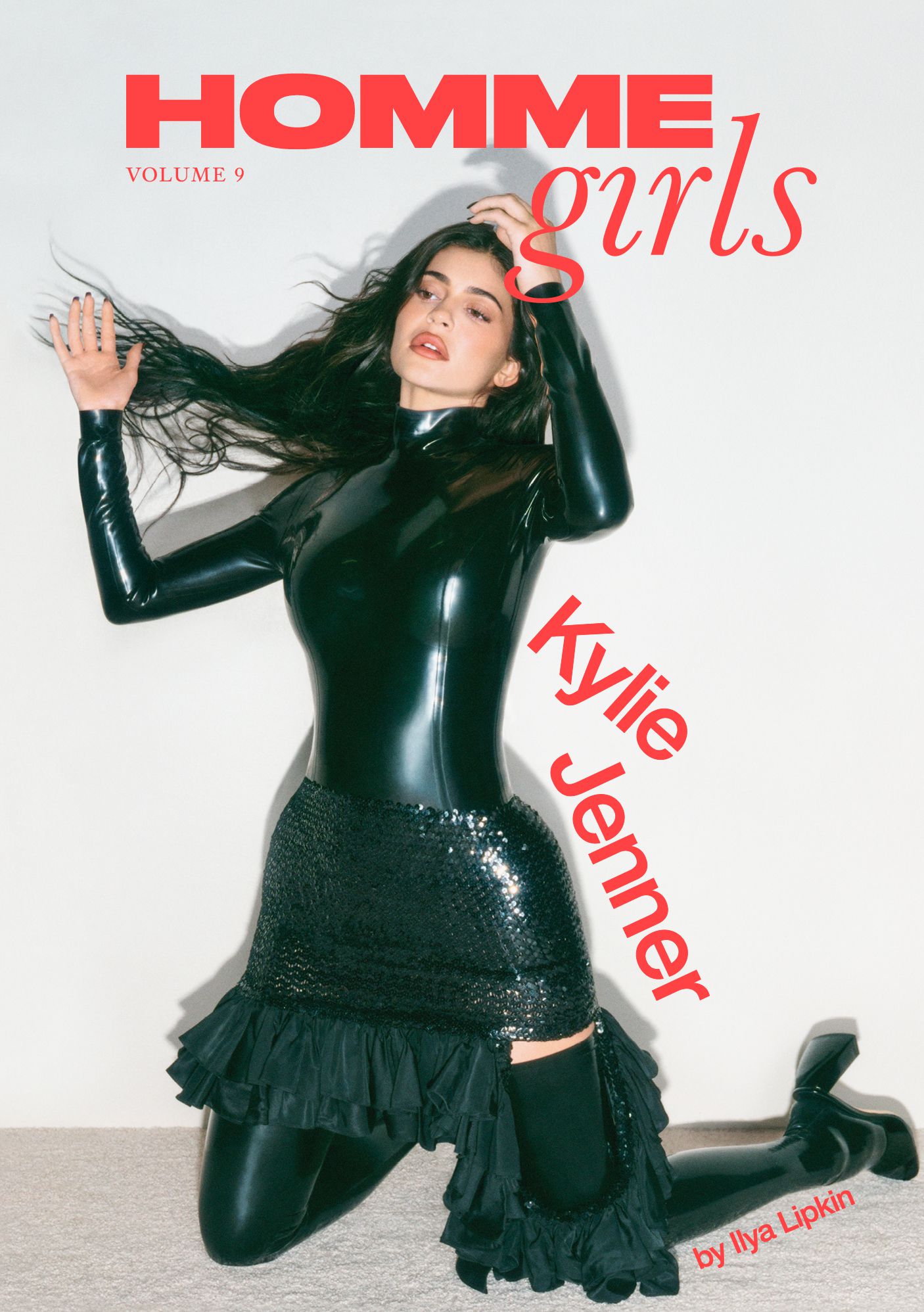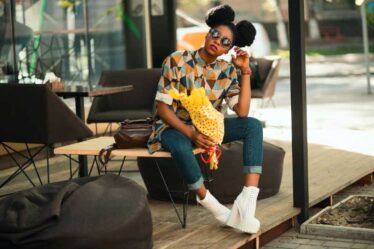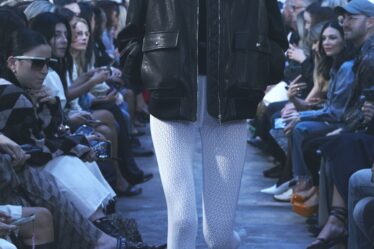
HommeGirls, the independent magazine and apparel brand founded by designer Thakoon Panichgul, has snagged its biggest cover star yet — Kylie Jenner.
On sale on May 4, the issue has four additional covers, starring models Emily Ratajkowski, Kiko Mizuhara, Paloma Elesser and Alek Wek. But spotlighting a star of Jenner’s magnitude — and the fact that it was her team that approached the publication first, according to creative director Jen Brill — marks the start of HommesGirls’ next stage, Panichgul said.
Since its launch in 2019, HommeGirls has gone from secret Instagram to insider-favourite magazine and online publication. But while the arrival of a new print publication is rare enough, one that’s growing and commercially successful is even more so. Its audience is still small — online, it has 30,000 unique visitors monthly; its print circulation is 90,000 — but the company is profitable, and revenue grew 85 percent year-over-year from 2021 to 2022. Those numbers are boosted by its apparel business, which sells shirts, boxers, trench coats and upcycled tees, and saw its stockists double in 2022.
On the content side, HommeGirls has built the business by focussing on a specific point-of-view — women wearing men’s or menswear-inspired clothing — and continuously signing new luxury advertisers. To date, the magazine has worked with Chanel, Nike, Calvin Klein, Ferragamo, Levi’s and Marc Jacobs Heaven. Chanel Beauty, Celine and J.Crew are sponsoring spreads in the April issue. In product, HommeGirls has slowly but intentionally grown its apparel assortment, which is now stocked at retailers like Bergdorf Goodman and Net-a-Porter.
“We defined HommeGirls so well, and so distinctly, now it’s about trying to figure out the ways in which we can kind of broaden the community,” said Panichgul.
An Answer to Trickle-Down Fashion
HommeGirls is something of a comeback engine for Panichgul, a star of 2000s fashion. After multiple attempts to reinvent his Thakoon label, including a reboot with backing from investor Silas Chou in 2016 and a 2019 team-up with DTC cashmere brand Naadam to relaunch Thakoon as a lower-price digital label. (Panichgul has since parted ways with the company, and Naadam didn’t respond to a request for comment on Thakoon’s current operations.)
Panichgul started HommeGirls as a passion project after noticing fashionable female friends using men’s clothes to create a daily uniform. It was a style sensibility he didn’t feel was getting enough attention from existing publications and retailers. The concept, he thought, was specific but still rich and expansive.
Its editorials feel off the cuff and exhibit personal style and parsed-back looks. Creative director Brill sums up the vibe as a “white Hanes T-shirt and a Chanel jacket.” Interviews often highlight creatives who embody the fluid-dressing philosophy: designer Martine Rose and French stylist Camille Bidault-Waddington in the last issue, which also featured a 16-page spread on white button-downs as a cultural force.
“We’re big believers in letting our instincts and gut drive things … Discovery is a huge part of the publication for us: new voices, new points of view; We’re relentless and obsessed when it comes to those things,” said Brill.
The magazine informs Panichgul’s edited-down clothing designs and provides a platform to showcase the clothing. Having the publication serve as a guide has helped Panichgul create simple, refined pieces and reel in overproduction. The result, he said, is clothes people want to wear with significantly less overhead than his previous businesses. Sell-throughs sit above an average of 75 percent.
“I pay attention to the community around me. [Reaching people] is not about looking at a business plan and then working your way down from projections and fake numbers … that’s a false promise,” said Panichgul.
The business model is a fit for today’s circumstances, which make it difficult for a magazine to exist on ad dollars alone. In fashion, independent brands struggle to stand out on the runway in comparison with luxury’s largest players. Brand storytelling through the magazine and its channels better fits today’s dynamic where consumers come across brands themselves online, said Panichgul.
“[Fashion] was really about runway presentations and being able to attract a handful of players, and once you did that, there was a trickle-down effect,” he said. “I just don’t think that exists anymore.”
HommeGirls Looks Ahead
Panichgul said that over the past four years, he prioritised shoring up DTC, making sure he understood his consumer and crafting a strong, identifiable storytelling style in the magazine that attracted people who already had an inherent understanding of its perspective. A huge part of that is being able to throw things at the wall and “seeing where the chips fall,” said Brill. The Kylie cover, which for some readers will be unexpected, is one example.
Now, the brand is ready to pick up the pace of growth in both content and commerce.
Panichgul wants to bolster the editorial team — adding more full-time staff and contributors — so HommeGirls can do more partnerships and explore new content models. In the last year, the company has hired a new features director, fashion director and managing director, and the masthead for Issue 9 included nearly 30 names. Already, the company has done brand-focused mini-issues, issue inserts and physical activations.
Panichgul, who didn’t take investors initially so he could firm up the vision on his own, is now open to an injection, but he’s looking for true HommeGirls believers, those who understand the business model and see its potential.
“It’s really important we pay attention to growth trajectory and seize on momentum when we can,” said Panichgul. “I want people who believe in the brand; I don’t want just money.’”



